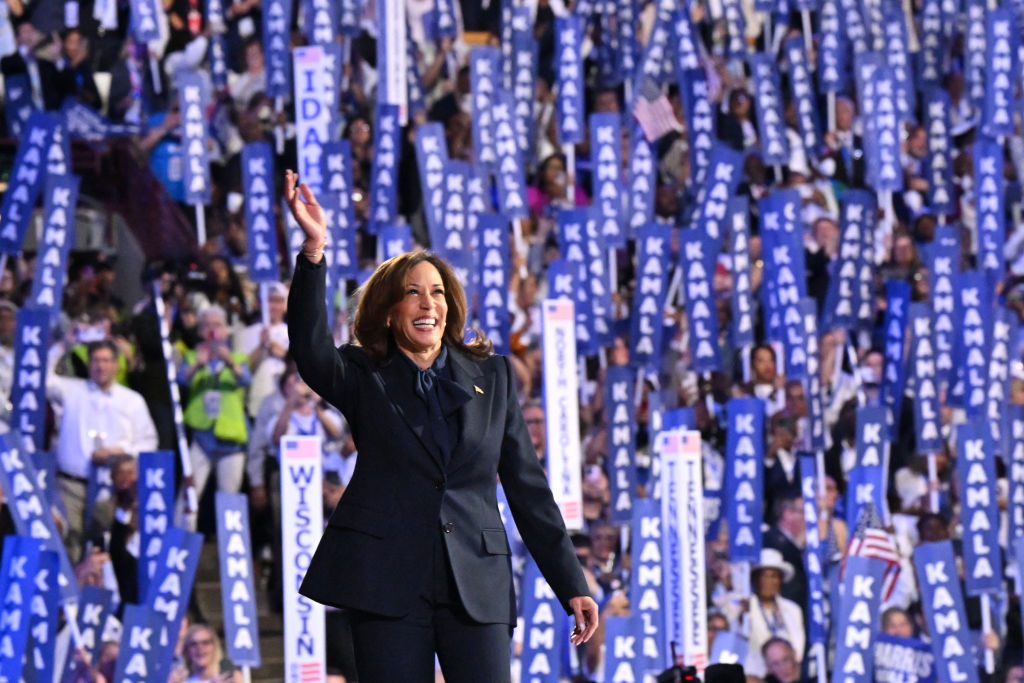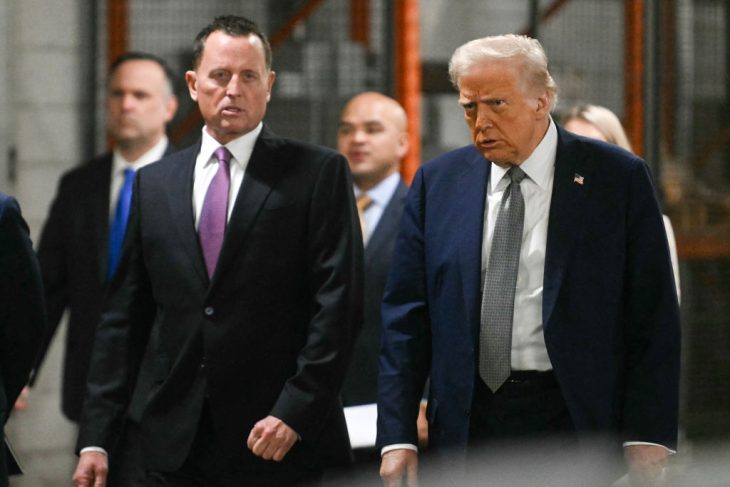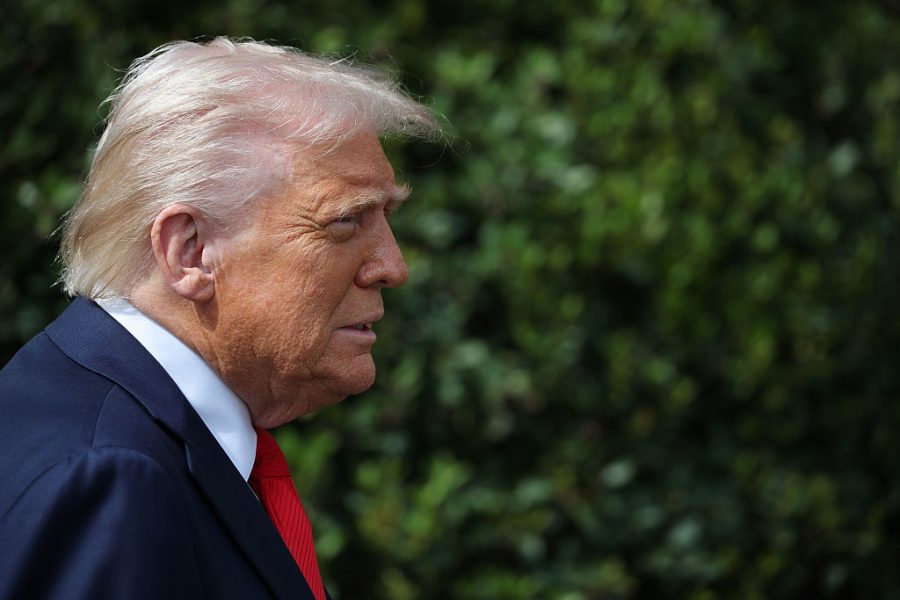This is one very strange presidential campaign.
That’s not just because it seems to go on forever. This one seemed to begin shortly after Eisenhower left office. It’s also because there have been two general election campaigns in a row. The first pitted Donald Trump against Joe Biden and ended with Trump’s decisive victory. The clincher was Biden’s humiliating debate performance, which showed the world what his aides, his party and a compliant media had been hiding: the president was suffering serious cognitive decline.
Once voters had peeked behind the curtain, they were convinced Biden could not serve another four years. Indeed, it was questionable whether he was competent to serve now. That question still hovers, unanswered, over the White House. No one is sure who is really running the Executive Branch.
The public display of Biden’s declining health and his dismal poll numbers were a catastrophe for Democrats. They not only meant the president was sure to lose in November, they spelled disaster for down-ballot candidates for the House, Senate and local offices. (There are so many straight-party voters today that down-ballot candidates can’t overcome a big loss at the top of the ticket.) The prospect of losing both houses of Congress, as well as the White House, was intolerable for party leaders, led by Nancy Pelosi, Chuck Schumer and Barack Obama.
Faced with that grim reality, Pelosi, Schumer and their media allies acted decisively to force Biden out of the race. The president didn’t leave voluntarily. He was tossed out the window, struggling and screaming.
Equally important, the same troika picked the new nominee swiftly, with near unanimity. Only Obama dragged his feet, hoping for an open convention. Once he had been outmaneuvered and Harris’s nomination was secure, he got on board, too.
The mainstream media played an important supporting role in this drama. Having resolutely ignored Biden’s fragile health until his debate performance, they turned on a dime and marched in lockstep with Pelosi, demanding his exit.
Biden’s declining health over the past two years should have been a top national story and remained so for months. The cover-up by his top aides and congressional Democrats should also have been a top story. Yet the White House press corps failed to report these grave problems or bother to investigate them.
A self-respecting press corps should be embarrassed by those failures. They aren’t. Real power means never having to say you’re sorry.
The press should be equally embarrassed by their rapid about-face, in tune with Democratic leadership, switching from support for Biden to support for his replacement on the ticket. They seem to be immune to embarrassment. The “democracy dies in darkness” crowd have ignored their failures, done nothing to correct them and doubled down on backing “their” rejuvenated ticket. There is more critical reporting on the back of a cereal box.
This fanboy coverage of the new nominee shows why the public no longer trusts the legacy media. The nation’s leading newspapers and television channels are not just Democratic partisans; they hardly bother to hide it. They write headlines and “hard news” to match their editorials. The sad but inescapable conclusion is that their partisan commitments overshadow their journalistic responsibilities.
Donald Trump and his campaign team should have been prepared for the Democrats’ switcheroo and the media lovefest that followed. Republicans certainly knew about Biden’s poor health. They could see the pressure building to remove him after the debate. They should have prepared for that contingency. They didn’t.
Trump was caught flat-footed — and it shows. He hasn’t settled on his main lines of attack against Kamala Harris or launched a major media campaign to define her. He selected his own vice presidential nominee, J.D. Vance, while Biden was still the presumptive nominee. Presuming he would easily defeat Biden, Trump picked a running mate who would lock in his MAGA agenda for 2028 and beyond.
Now that Trump faces Harris, not Biden, he has failed to pivot his attack. He is running an undisciplined campaign, designed to mobilize the faithful at rallies. He talks at length about whatever strikes his fancy. He pays no attention to undecided voters and has yet to launch an advertising blitz to define the opposition. The risk is that Kamala will define herself for voters before Trump can paint her as a “radical, left-wing San Francisco liberal.”
Trump himself is already well-defined in the public mind. The real contest is to define Harris. The side that succeeds is likely to win the election.
Another strange feature of this “second election campaign” is Kamala Harris’s strategy and its success so far. Harris, the consummate insider, is running as an outsider. She rose to power through her ties to leaders of the California Democratic Party, beginning with Willie Brown. She has climbed the greasy pole to the second-highest office in the land. She cannot point to any accomplishments in the Senate or the White House, where she was given primary responsibility for the “root causes” of illegal immigration through the southern border. That hasn’t worked out well. Instead of dwelling on those failures, she wisely skips over her years in the White House and Senate to paint herself as a prosecutor.
Like all outsiders, Harris is campaigning on vague, gauzy promises of a better future. Since Obama has already used “Hope and Change,” she has substituted the word “Joy.” Elect Kamala and the country will overflow with hope and joy. Oh, and “the future.” She’s very much in favor of “the future.”
When Obama ran that campaign fluff, he had two huge advantages that Harris lacks. First, Obama actually was an outsider. He was a little-known Democrat running to succeed a vulnerable Republican administration. Second, Obama and his brilliant campaign strategist, David Axelrod, had the latitude to package the candidate as they saw fit since his public record was thin. The campaign rode those two advantages, plus an articulate candidate and a weak economy (which could be linked to the opposition party), to victory.
Harris lacks all those advantages. She is a high-ranking member of the unpopular Biden administration. She is easily linked to its most reviled policies: the surge of illegal immigration and inflationary spending, for which she cast deciding votes in the Senate. She can’t pin the country’s problems on her opponent since her party is in power and she is an integral part of it. Unlike Obama, she is so inarticulate that she runs a risk every time she speaks off the cuff. There’s a reason she simply mouths her speechwriters’ words and avoids interviews.
Harris’s other major problem is that she is on record — and on tape — with lots of far-left ideas from her 2019-20 campaign for the Democratic nomination. She’s trying to wriggle out from some of them, like her strong position against fracking, and highlighting others, like her tax-and-spend economic program. She has proposed between $1.7-2 trillion in new expenditures, which will turbocharge inflation. She wants to give all new homebuyers $25,000, which will jack up the prices for those houses. She has no plans for closing the border and wants to create a path to citizenship for millions of illegal aliens. She underscored those ideological commitments when she chose Minnesota’s very progressive governor, Tim Walz, as her VP, not a more centrist candidate.
We can only guess at the policies Harris would pursue as president. Her website is filled with vague aspirations, not concrete proposals, except for saying she will spend big and tax the rich. The result is a left-wing Rorschach test for voters. She hasn’t filled in the sketchy ink blots with clear outlines of proposed policies.
Given this long list of problems, Kamala Harris should be in deep trouble. She’s not, at least so far. That’s partly because of a fawning media, partly because Trump is a polarizing figure and partly because the former president has failed to exploit his advantages.
Whether Trump can recapture the presidency will depend on whether he can seize those advantages, mobilize his voters, and convince the few who remain undecided to vote against Harris and the Biden administration.
For Harris, the aim is to mobilize Democratic voters against Trump, avoid responsibility for the Biden administration’s unpopular policies and convince America that she will bring a bright future without filling in the details.
The battle will be mostly negative — vote against the other side — and will begin in earnest on September 10. That’s when Trump and Harris walk onto the debate stage and the teleprompters go dark. That’s when the voters can see for themselves — and choose.


























Leave a Reply